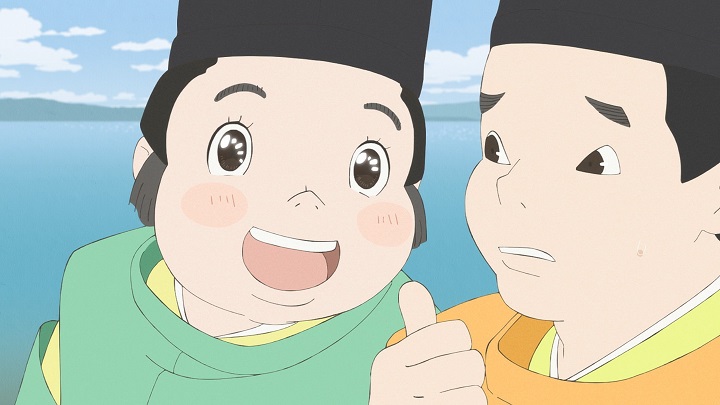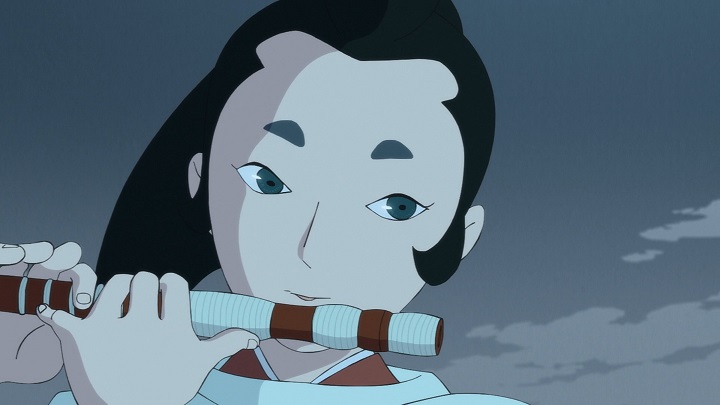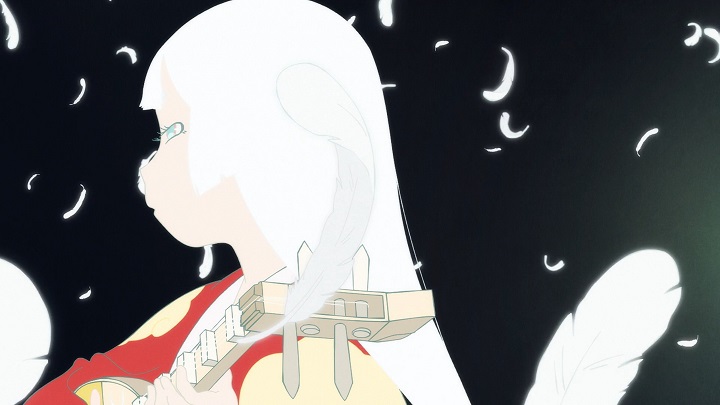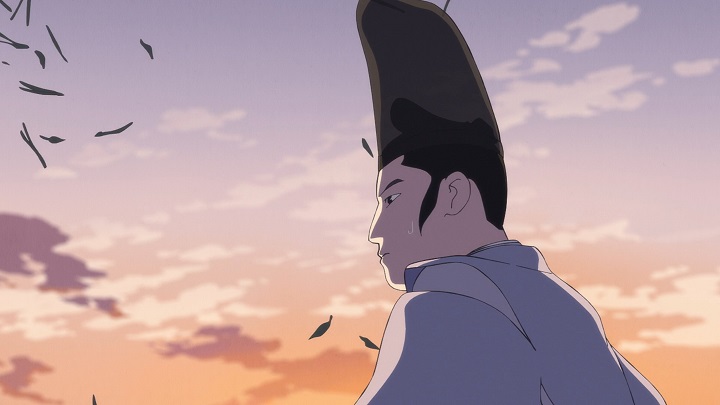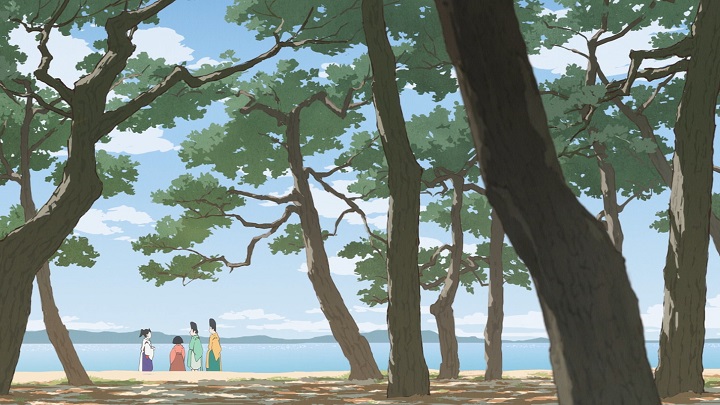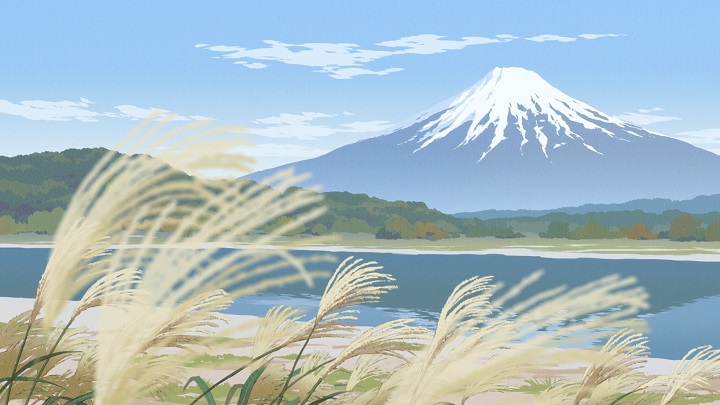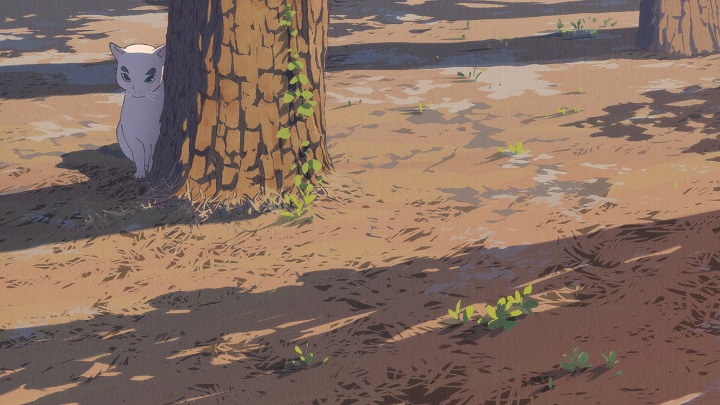Heike Monogatari returned this week to the more character-oriented stories of its first two episodes. The renewed focus on Shigemori’s children saw Biwa come back in a major way, and the introduction of Atsumori’s naïve character was handled with detail, giving the show a strong symbol of innocence that it can corrupt at its leisure. Kiyomori’s hoarding of wealth and power was contextualized by his abhorrence of aristocratic decadence, and his grandson’s continued military struggles received further consideration. (I’m still not totally happy with Koremori’s arc – why does the show continue to limit his screen time outside of military settings? – but I won’t spend a second post lamenting Heike’s shortcomings here.) Even retired emperor Takakura (now on his sickbed) got to share a tender moment with Tokuko, framing their relationship in a much warmer light than previous interactions. Much darker was the revelation that their son, the newly crowned Emperor Antoku, “starts crying when he hears the waves.” How’s that for foreshadowing the fate of a future drowning victim?
This was all good stuff, but I have several aesthetic bones to pick with this episode. The show’s streak of beautiful backgrounds continued as ever (a handful of my favorites are included below), but the linework seemed less substantial and more wispy this week than it has in the past. Take, for example, this shot of Kiyomori, incensed by the news of Yoritomo’s rebellion. There’s the issue of the popped vein on his forehead – not a particularly convincing way to illustrate the anger of the most powerful man in Japan – but beyond that, the lack of folds in his overcoat and the unconvincing layering of his outfit as a whole make the illustration look insubstantial. This is shortly after he’s expressed regret over his son’s death and vowed to take the Taira clan to even greater heights in his absence, so rendering him in such a simple manner was a bizarre choice. The onset of Kiyomori’s spiritual troubles, too, were represented by a simple hue change as a static set of clouds rolled into frame. This was particularly disappointing – I hadn’t expected that such a visual compromise would make its way into a Yamada anime.
Minor issues in the eyes of most, perhaps, but I do think Heike Monogatari succeeds in large part because of its art, so slippage in that department worries me. On the other hand, I do appreciate that the story slowed from a sprint to a jog this week. The relocation of the capital from Kyoto to Fukuhara may not have had a tremendous impact on the story (for reasons which will certainly be explored next week), but the change of location did prompt a lot of plot developments and good character moments. Go-Shirakawa’s relocation kindled a frustration that prompted him to plot another rebellion against the Heike, using the monk Mongaku (unnamed in the anime) as a go-between with Lord Yoritomo. The show made use of Fukuhara’s shoreline to include an oceanside flute performance starring Atsumori, which was among the strongest character introductions that the show has designed thus far. (Atsumori’s idolization of Shigehira for his military heroism – with which Shigehira was clearly uncomfortable – made for an effective contrast with their joint musical performance, also starring Kiyotsune.) Most importantly, the general fixation on water eased us into Koremori’s first outing as commander at the Battle of Fujikawa, which took place along the Fuji River.
Which brings me to this week’s Symbolism Corner! Scenes of dusty old military advisors feeding strategy to Koremori are boring (and confusingly paired with youthful electronic music in this case), but winged animals are not, and Heike Monogatari has been full of the latter for six weeks straight. Last week it was crows; this week it was a much less ominous bird in egrets, but still one whose beating wings startled the Heike into retreating before the fighting even started. A number of egrets could be seen hunting in the marshes around the Taira camp in the hours before their panic, but it was only once a single fish (representing the undermanned Heike) leapt from the water at night that the whole flock (representing the 200,000 strong Genji) took flight. Another winged creature that received prominent placement in the episode was the butterfly – not a living insect like the one from the premiere’s first shot, but multiple butterfly flags waving in the breeze at Koremori’s encampment. The fragility of that series-opening image matches the fragility of the Taira forces under Koremori’s command, and his anger in this episode’s final moments read like parody compared to what we know about his gentle nature. How long before Shigemori’s eldest son has the wings stripped from his back? If he can’t discover within himself the monstrous instinct that war demands from its participants, he may never fly again.

